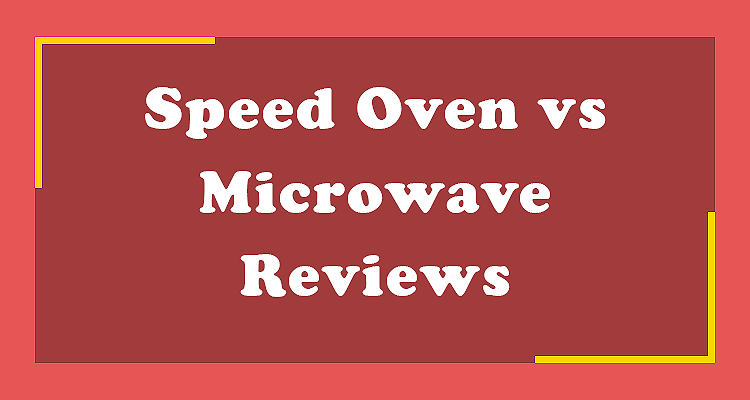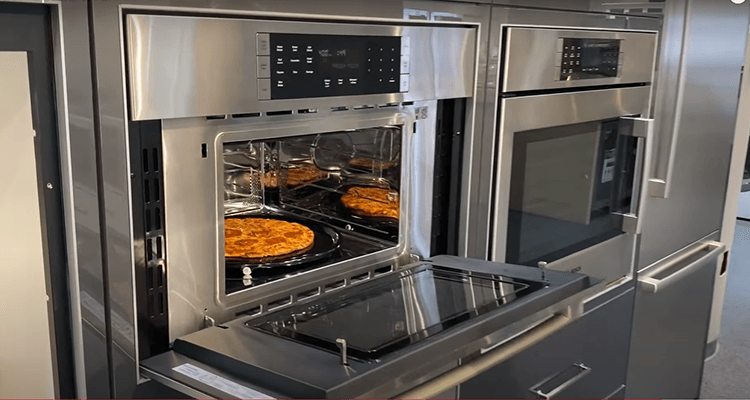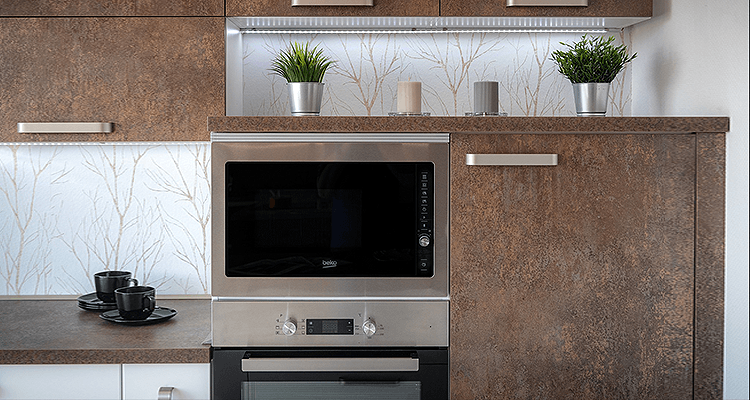
Introduction to Speed Oven and Microwave
Do you find yourself weary of spending countless hours in the kitchen, patiently awaiting your food to finish cooking? Well, we have some exciting news for you! In today’s fast-paced world, Speed Oven and Microwave have revolutionized the way we cook by taking quick cooking to a whole new level.
But which one is really better? Join us as we delve into the 5 key differences between these kitchen superheroes and uncover their secrets to lightning-fast meals. Get ready to discover which appliance deserves a spot on your countertop in this ultimate battle between speed ovens and microwaves!
What is a Speed Oven?
A Speed Oven is a versatile kitchen appliance that seamlessly merges the capabilities of a microwave oven with those of a convection oven, offering a versatile and efficient cooking solution. Its ingenious design harnesses both microwave technology and convection heating elements to cook food rapidly and uniformly. By leveraging the power of convection heating and microwave technology, it excels at preparing food in less time than a conventional oven, all while preserving the flavors and textures of traditional baking.
What is a Microwave?
A Microwave, often abbreviated as “Microwave Oven,” is a kitchen appliance that harnesses microwave radiation to rapidly and efficiently heat and cook food. It is a versatile and popular appliance found in households and commercial kitchens worldwide. It is a common and widely used appliance in households and commercial kitchens.
Let’s check it out our most popular article
Brandless Blender Review Surla Table Blender Review Hamilton Beach vs Oster Blender Wolf Blender vs. Vitamix Ninja vs. Oster Blender Review Avamix Blender Reviews
Key Differences between Speed Ovens and Microwaves:
Cooking Method:
When it comes to whipping up speedy meals, your choice of cooking method can be a game-changer. In this fast-paced world, where time is of the essence, two appliances have revolutionized quick cooking: speed ovens and microwaves. While both promise speedy results, they differ greatly in their approach.
Speed ovens harness the power of convection cooking combined with microwave technology to deliver lightning-fast meals without sacrificing taste or texture. This innovative fusion ensures that your food is not only thoroughly cooked but also beautifully browned and crisped on the outside. Imagine sinking your teeth into a succulent roasted chicken with a perfectly golden skin achieved in mere minutes! The versatility of speed ovens allows you to bake, broil, roast, or even grill your favourite dishes effortlessly.
Microwaves have long been hailed as champions of convenience when it comes to rapid meal preparation. Utilizing electromagnetic waves that penetrate food molecules directly, these time-saving wonders heat leftovers like nobody’s business. But let’s be honest – despite their efficiency at warming up yesterday’s dinner within seconds, microwaved meals often lack that appetizing appeal we crave.
Size and Capacity:
One of the key factors to consider when comparing speed ovens and microwaves is their size and capacity. While both appliances aim to provide quick cooking solutions, they differ in terms of how much food can be accommodated.
You need an appliance that can handle the demands of a large meal while still delivering speedy results. This is where size and capacity come into play.
A Speed Oven might be your go-to choice if you have limited kitchen space but need something versatile enough to cook various dishes simultaneously. With its compact design, it offers convenience without sacrificing functionality or compromising on taste.
On the other hand, if you often cater for bigger gatherings or have a larger family, a microwave with ample capacity becomes crucial. You want to avoid being stuck reheating one plate at a time while hungry guests wait impatiently.
Consider your lifestyle, culinary aspirations, and entertainment habits when making this decision. After all, there’s no “one-size-fits-all” solution when it comes to choosing between these two appliances for quick cooking adventures!

Cooking Results:
When it comes to cooking, the result is what truly matters. Both speed ovens and microwaves have their unique ways of achieving quick cooking, but how do they compare in terms of the outcome? Let’s explore the fascinating world of cooking results.
Speed ovens offer a wide range of cooking options that can elevate your culinary creations to new heights. From baking perfectly golden pastries to roasting juicy meats, these versatile appliances are designed to deliver exceptional results. The combination of convection heat and microwave technology ensures even and efficient cooking, resulting in deliciously crispy exteriors while retaining the juiciness within.
On the other hand, Microwaves have long been known for their ability to warm up leftovers or defrost ingredients in a flash. However, when it comes to more intricate recipes or dishes requiring browning or crisping effects, microwaves may need to be revised. While certainly excel at reheating meals quickly without sacrificing taste or moisture levels, achieving gourmet-quality outcomes may require some extra effort.
Ultimately, your choice between a speed oven and a microwave will depend on your specific cooking needs and preferences. Whether you prioritize convenience over precision or crave professional-level results every time you step into the kitchen. The decision lies within your hands (or rather, on your countertop). Time to unleash those inner culinary ambitions!
Energy Efficiency:
When it comes to quick cooking, energy efficiency is a topic that often gets overlooked. However, considering the environmental impact and cost savings in the long run, it’s an aspect worth considering.
Speed ovens and microwaves both have their unique approaches to energy efficiency. While speed ovens typically combine microwave technology with convection or radiant heat for faster cooking times, microwaves solely rely on electromagnetic waves to heat food quickly.
In terms of energy consumption, speed ovens tend to be more power-hungry due to their additional heating elements. However, make up for it by reducing overall cooking time and minimizing standby mode usage.
On the other hand, microwaves are known for being highly efficient when it comes to electricity usage during operation but may consume more energy if left in standby mode or used extensively throughout the day.
Price Range
When it comes to choosing the perfect appliance for quick cooking, another significant factor to consider is the price range. Considering your budget is essential because, after all, your finances matter. Speed ovens and microwaves offer a range of choices with various features and price points to suit your needs.
Speed ovens are often on the higher end of the cost spectrum due to their advanced technology and multifunctionality. These modern marvels offer not only microwave capabilities but also convection baking and grilling functions. If you’re someone who appreciates versatility in your kitchen gadgets, investing a little extra might be worthwhile.
On the other hand, Microwaves generally fall into a more affordable category. With basic models available at pocket-friendly prices, they are an attractive option for those on a tighter budget or simply looking for straightforward reheating or defrosting solutions.
However, it’s important to remember that pricing only sometimes directly correlates with quality or performance. Some mid-range microwaves can surprise you with their efficiency and durability while still keeping your wallet happy.
Ultimately, when considering price range as one of your decision-making factors between speed ovens and microwaves, consider your unique requirements and financial limitations when making your decision. Whether you splurge on a top-of-the-line speed oven or opt for an economical microwave model depends entirely on what suits both your culinary aspirations and financial situation best.
Pros and Cons of Speed Ovens
In the ever-evolving world of kitchen appliances, speed ovens have emerged as a game-changer for those seeking quick cooking solutions. However, like any innovation, it comes with its own set of pros and cons. Let’s dive into the fascinating world of speed ovens to explore why they’ve become a popular choice for busy individuals.
One major advantage of speed ovens is their ability to combine the best features of both conventional ovens and microwaves. With advanced technology at play, these appliances can cook your meals up to three times faster than traditional methods while maintaining superior taste and texture. Say goodbye to rubbery reheated leftovers!
Another benefit worth mentioning is that speed ovens are incredibly versatile. Offer multiple cooking modes, such as convection baking, grilling, broiling, and even steaming. This versatility ensures that you can prepare a wide range of dishes effortlessly without cluttering your countertop with separate devices.
However, it’s important to recognize certain drawbacks associated with speed ovens, too. For instance, some users may find these appliances slightly more complex to operate due to their multitude of functions and settings compared to the simple microwave controls we’re accustomed to.
Furthermore, while speed ovens excel in fast cooking tasks like reheating or defrosting food quickly without sacrificing quality or flavour profile, when it comes down to larger meals requiring longer cook times or delicate recipes demanding precise temperature control – traditional ovens might still reign supreme.

Pros and Cons of Microwaves
Microwaves have revolutionized the way we cook, providing us with quick and convenient meals at the push of a button. These nifty appliances offer numerous benefits that make them a staple in most kitchens.
Firstly, microwaves excel in their ability to heat food rapidly, saving valuable time for busy individuals. Whether you’re defrosting meat or reheating leftovers, a microwave can get the job done in minutes. Moreover, are incredibly user-friendly, requiring little culinary expertise to operate effectively.
On the flip side, however, microwaves also come with some downsides worth considering. One major concern revolves around nutritional value. The intense heat generated by microwaving can sometimes lead to a nutrient loss in certain foods. Additionally, while microwaved meals may be speedy and simple to prepare, often lack the depth of flavor achieved through traditional cooking methods like roasting or baking.
Despite these drawbacks, though, it’s undeniable that microwaves continue to play an essential role in modern kitchens worldwide. With their unmatched speed and convenience factor alone, perfect for those on-the-go moments- they remain an indispensable tool for many households. So next time you find yourself torn between embracing tradition or opting for efficiency when it comes to your meal preparation routine, weigh up both sides before making your choice!
Which is Better for Quick Cooking?
When it comes to quick cooking, the battle between speed ovens and microwaves has been raging on for years. Both appliances claim to offer lightning-fast results, but which one truly reigns supreme in the realm of efficiency? Let’s delve into their key differences and find out.
Speed ovens, often referred to as combination or convection microwave ovens, are a fusion of traditional oven baking with microwave technology. Boast the ability to cook food faster than conventional ovens while retaining that delightful crusty finish we all crave. With their advanced features like infrared grilling and steam functionality, speed ovens have become a versatile tool in many kitchens.
On the other side of this culinary showdown stands the mighty microwave. This household staple has long been associated with reheating leftovers or quickly defrosting frozen meals. However, modern microwaves have evolved beyond these basic functions. Equipped with sensor cooking technology and multiple power levels, it can now tackle more complex tasks, such as steaming vegetables or popping popcorn flawlessly.
So, which appliance takes home the crown for quick cooking supremacy? The answer may lie in your personal preferences and cooking needs. While speed ovens excel at replicating an oven-like experience without compromising time efficiency, microwaves remain unrivalled when it comes to sheer convenience and versatility.
Final Thought: Speed Oven and Microwave
Speed ovens and microwaves both have their unique benefits, but there are some distinct differences between the two. While microwaves may be quicker and more budget-friendly, speed ovens offer a wider range of cooking capabilities and potentially better taste results.
Ultimately, the best option for quick cooking will depend on your specific needs and preferences. Whichever option you decide on, both of these appliances can significantly streamline meal preparation and free up your time in the kitchen.
After reviewing the key differences between Speed Ovens and Microwaves, it is clear that both appliances have their unique features and benefits when it comes to fast and efficient cooking. Nonetheless, based on your requirements and preferences, one of them might be a more suitable choice for your needs.
There isn’t necessarily a clear winner between Speed Ovens and Microwaves when it comes to fast cooking.
FAQ About Speed Oven and Microwave
The primary difference between a Speed Oven and a Microwave is their cooking technology. A Speed Oven combines microwave technology with convection and radiant heating elements, allowing it to cook food quickly using a combination of microwave energy and hot air. In contrast, a Microwave uses only microwave radiation to heat and cook food.
Generally, a Speed Oven cooks faster than a Microwave. The combination of microwave energy and convection/radiant heating in a Speed Oven enables it to cook food quickly and evenly. Microwaves primarily heat the water content in food. At the same time, Speed Ovens use a broader range of heating methods for faster and more versatile cooking.
Yes, Speed Ovens are typically more versatile than Microwaves. While Microwaves are great for reheating and defrosting, Speed Ovens can perform a wider range of cooking tasks. They can bake, roast, broil, and even brown food, making them suitable for preparing a variety of dishes beyond simple reheating.
Yes, there can be differences in food texture and quality. Speed Ovens are known for producing food with better texture and browning because of their convection and radiant heating. Microwaves tend to heat food more unevenly, which can result in variations in texture and may not achieve the desired browning or crisping.
Leave a Reply